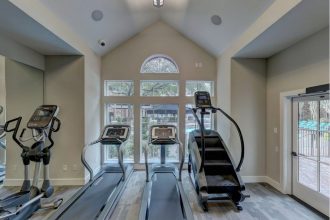Aging in place refers to the ability of older adults to live independently and comfortably in their own homes for as long as possible. It is a choice many senior citizens make to maintain their quality of life and personal freedom. Essential to this decision is ensuring the home environment is safe, support systems are accessible, and resources that cater to an aging individual’s needs are available. Below, we explore the vital aspects and resources that contribute to successful aging in place.
Essential Home Modifications for Safe Aging in Place
One of the first steps in preparing for aging in place is modifying the home environment to prevent accidents. This includes installing grab bars in the bathroom, ensuring there is adequate lighting, and removing tripping hazards such as loose rugs. Such modifications can significantly reduce the risk of falls, which are a leading cause of injury among older adults.
Kitchens and living areas also need attention, with adjustments such as variable height countertops and the addition of a seated work area to facilitate meal preparation. Similarly, changing doorknobs to lever handles can make doors easier to open for those with limited hand strength, and installing ramps can aid those with mobility issues.
When home modifications become insufficient, considering personalized home care services can provide the necessary assistance while enabling seniors to remain in the comfort of their home. These professionals can help with activities of daily living (ADLs), ensuring a senior’s safety and well-being as they age in place.
Understanding Community Resources and Services for Aging Adults
The local community can be an invaluable resource for seniors planning to age in place. Community resources often include transportation services for older adults who no longer drive, which can be essential for attending appointments and running errands. Adult day care programs provide opportunities for social interaction and respite for caregivers.
For nutritional support, seniors can take advantage of meal delivery services that cater specifically to their dietary needs. These services ensure that older adults receive balanced meals without the stress of meal prep. Many communities also have food pantry programs or subsidized meal programs for seniors on limited incomes.
Innovative Technologies That Support Elderly Independence
Technology plays a vital role in supporting the independence of elderly individuals living at home. Medical alert systems, for instance, offer seniors a way to call for help in an emergency just by pressing a button they can wear around their neck or wrist. This instantaneous connection to assistance is integral to providing peace of mind to both the elderly and their loved ones.
Advancements in health monitoring devices also mean that the elderly can regularly check vital signs such as blood pressure and glucose levels without visiting a healthcare provider. These devices often allow for health data to be shared directly with medical professionals, helping to manage chronic conditions effectively from home.
Building a Support Network for Aging at Home
Isolation can be one of the biggest challenges faced by the elderly aging in place, but a strong support network can make all the difference. Family members, friends, and neighbors can help with daily tasks, offer companionship, and provide transportation when needed. Regular contact with loved ones can also help monitor the senior’s health and quickly identify any needs that may arise.
Community organizations and local clubs can offer social engagement opportunities through activities, events, or volunteer programs. These interactions promote mental health and can provide a sense of purpose and belonging. Religious institutions often have dedicated groups or services for older adults that can also be a source of support.
For those who may not have family nearby, in-home care and companion services can fill the gap. Such services not only address practical needs like housekeeping and meal preparation but also provide social interaction and companionship, which are vital for emotional well-being.
Altogether, successful aging in place requires careful planning, adaptation, and access to resources designed to meet the evolving needs of seniors. Overall, with thoughtful strategies and the integration of supportive services and technologies, older adults can enjoy independence and quality of life in the familiar comfort of their own homes.














